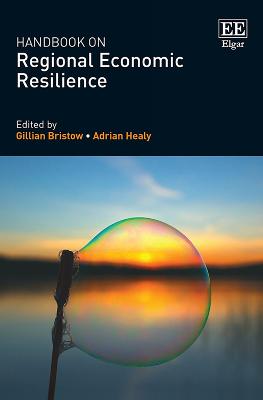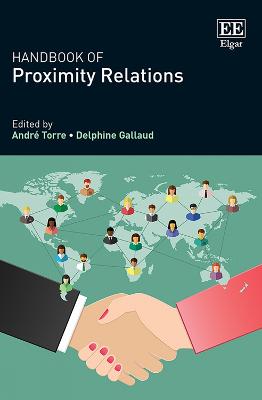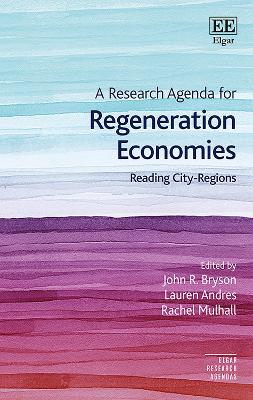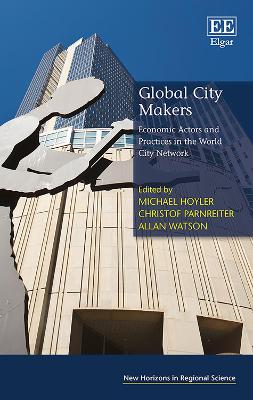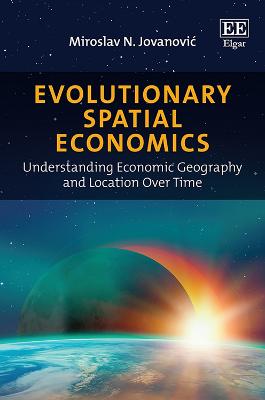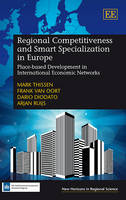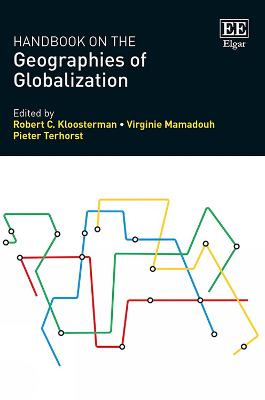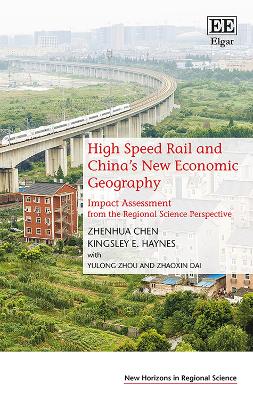Regional Economic Advantage
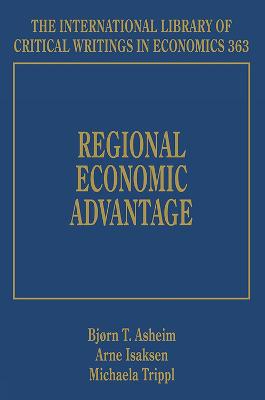 -10%
portes grátis
-10%
portes grátis
Regional Economic Advantage
Isaksen, Arne; Asheim, Bjorn T.; Trippl, Michaela
Edward Elgar Publishing Ltd
05/2019
960
Dura
Inglês
9781786437679
15 a 20 dias
Acknowledgements
Introduction Bjorn T. Asheim, Arne Isaksen and Michaela Trippl
PART I INDUSTRIAL DISTRICTS
1. Sebastiano Brusco (1982), 'The Emilian Model: Productive Decentralisation and Social Integration', Cambridge Journal of Economics, 6 (2), June, 167-84
2. Giacomo Becattini (1990), 'The Marshallian Industrial District as a Socio-Economic Notion', in F. Pyke, G. Becattini and W. Sengenberger (eds), Industrial Districts and Inter-Firm Co-Operation in Italy, Chapter 4, Geneva, Switzerland: International Institute for Labour Studies, 37-51
3. Sebastiano Brusco (1990), 'The Idea of the Industrial District: Its Genesis', in F. Pyke, G. Becattini and W. Sengenberger (eds), Industrial Districts and Inter-Firm Co-Operation in Italy, Chapter 2, Geneva, Switzerland: International Institute for Labour Studies, 10-19
4. Bjorn T. Asheim (2000), 'Industrial Districts: The Contributions of Marshall and Beyond', in Gordon L. Clark, Maryann P. Feldman and Meric S. Gertler (eds), The Oxford Handbook of Economic Geography, Part IV, Section 9, Chapter 21, New York, NY, USA: Oxford University Press, 413-31
PART II INNOVATIVE MILIEUS
5. Roberto P. Camagni (1995), 'The Concept of Innovative Milieu and its Relevance for Public Policies in European Lagging Regions', Papers in Regional Science, 74 (4), October, 317-40
6. Denis Maillat (1995), 'Territorial Dynamic, Innovative Milieus and Regional Policy', Entrepreneurship and Regional Development, 7 (2), 157-65
PART III FLEXIBLE SPECIALISATION AND NEW INDUSTRIAL SPACES (PAST AND PRESENT)
7. Giorgio Fua (1983), 'Rural Industrialization in Later Developed Countries: The Case of Northeast and Central Italy', Banca Nazionale del Lavoro Quarterly Review, 36 (147), December, 351-77
8. Charles Sabel and Jonathan Zeitlin (1985), 'Historical Alternatives to Mass Production: Politics, Markets and Technology in Nineteenth-Century Industrialization', Past and Present, 108 (1), August, 133-76
9. A. J. Scott (1988), 'Flexible Production Systems and Regional Development: The Rise of New Industrial Spaces in North America and Western Europe', International Journal of Urban and Regional Research, 12 (2), June, 171-85
10. Michael Storper and Bennett Harrison (1991), 'Flexibility, Hierarchy and Regional Development: The Changing Structure of Industrial Production Systems and Their Forms of Governance in the 1990s', Research Policy, 20 (5), October, 407-22
11. Ash Amin and Nigel Thrift (1992), 'Neo-Marshallian Nodes in Global Networks', International Journal of Urban and Regional Research, 16 (4), December, 571-87
12. Michael Storper (1995), 'The Resurgence of Regional Economies, Ten Years Later: The Region as a Nexus of Untraded Interdependencies', European Urban and Regional Studies, 2 (3), July, 191-221
PART IV INSTITUTIONAL APPROACHES
13. AnnaLee Saxenian (1996), 'Inside-Out: Regional Networks and Industrial Adaptation in Silicon Valley and Route 128', Cityscape: Bridging Regional Growth and Community Empowerment, 2 (2), May, 41-60
14. Richard Florida (2002), 'The Economic Geography of Talent', Annals of the Association of American Geographers, 92 (4), 743-55
15. Meric S. Gertler (2003), 'Tacit Knowledge and the Economic Geography of Context, or The Undefinable Tacitness of Being (There)', Journal of Economic Geography, 3 (1), January, 75-99
16. Michael Storper and Anthony J. Venables (2004), 'Buzz: Face-to-Face Contact and the Urban Economy', Journal of Economic Geography, 4 (4), August, 351-70
17. Andres Rodriguez-Pose (2013), 'Do Institutions Matter for Regional Development?', Regional Studies, 47 (7), 1034-47
PART V REGIONAL CLUSTERS
18. Bjorn Asheim, Philip Cooke and Ron Martin (2006), 'The Rise of the Cluster Concept in Regional Analysis and Policy: A Critical Assessment', in Clusters and Regional Development: Critical Reflections and Explorations, Chapter 1, Abingdon, UK: Routledge, 1-29
19. Michael E. Porter (2000), 'Locations, Clusters, and Company Strategy', in Gordon L. Clark, Maryann P. Feldman and Meric S. Gertler (eds), The Oxford Handbook of Economic Geography, Part III, Section 6, Chapter 13, New York, NY, USA: Oxford University Press, 253-74
20. Ron Martin and Peter Sunley (2003), 'Deconstructing Clusters: Chaotic Concept or Policy Panacea?', Journal of Economic Geography, 3 (1), January, 5-35
21. Maryann P. Feldman, Johanna Francis and Janet Bercovitz (2005), 'Creating a Cluster While Building a Firm: Entrepreneurs and the Formation of Industrial Clusters', Regional Studies, 39 (1), February, 129-41
22. Anders Malmberg and Dominic Power (2006), 'True Clusters: A Severe Case of Conceptual Headache', in Bjorn Asheim, Philip Cooke and Ron Martin (eds), Clusters and Regional Development: Critical Reflections and Explorations, Chapter 3, Abingdon, UK: Routledge, 50-68
23. Anders Malmberg and Peter Maskell (2006), 'Localized Learning Revisited', Growth and Change, 37 (1), March, 1-18
24. Bjorn T. Asheim, Arne Isaksen, Roman Martin and Michaela Trippl (2017), 'The Role of Clusters and Public Policy in New Regional Economic Path Development', in Dirk Fornahl and Robert Hassink (eds), The Life Cycle of Clusters: A Policy Perspective, Part I, Chapter 1, Cheltenham, UK and Northampton, MA, USA: Edward Elgar Publishing, 13-34
PART VI REGIONAL INNOVATION SYSTEMS AND POLICY
25. Philip Cooke (2001), 'Regional Innovation Systems, Clusters, and the Knowledge Economy', Industrial and Corporate Change, 10 (4), December, 945-74
26. Kevin Morgan (1997), 'The Learning Region: Institutions, Innovation and Regional Renewal', Regional Studies, 31 (5), 491-503
27. Maryann P. Feldman (2000), 'Location and Innovation: The New Economic Geography of Innovation, Spillovers, and Agglomeration', in Gordon L. Clark, Maryann P. Feldman and Meric S. Gertler (eds), The Oxford Handbook of Economic Geography, Part IV, Section 8, Chapter 19, New York, NY, USA: Oxford University Press, 373-94
28. Bjorn T. Asheim and Arne Isaksen (2002), 'Regional Innovation Systems: The Integration of Local "Sticky" and Global "Ubiquitous" Knowledge', Journal of Technology Transfer, 27 (1), January, 77-86
29. Franz Toedtling and Michaela Trippl (2005), 'One Size Fits All? Towards a Differentiated Regional Innovation Policy Approach', Research Policy: Regionalization of Innovation Policy, 34 (8), October, 1203-19
30. Bjorn T. Asheim and Meric S. Gertler (2005), 'The Geography of Innovation: Regional Innovation Systems', in Jan Fagerberg, David C. Mowery and Richard R. Nelson (eds), The Oxford Handbook of Innovation, Part II, Chapter 11, New York, NY, USA: Oxford University Press, 291-317
PART VII LOCALISATION AND GLOBALISATION
31. Harald Bathelt, Anders Malmberg and Peter Maskell (2004), 'Clusters and Knowledge: Local Buzz, Global Pipelines and the Process of Knowledge Creation', Progress in Human Geography, 28 (1), February, 31-56
32. Kevin Morgan (2004), 'The Exaggerated Death of Geography: Learning, Proximity and Territorial Innovation Systems', Journal of Economic Geography, 4 (1), January, 3-21
33. AnnaLee Saxenian (2005), 'From Brain Drain to Brain Circulation: Transnational Communities and Regional Upgrading in India and China', Studies in Comparative International Development, 40 (2), Summer, 35-61
34. Elisa Giuliani and Martin Bell (2005), 'The Micro-Determinants of Meso-Level Learning and Innovation: Evidence from a Chilean Wine Cluster', Research Policy, 34 (1), February, 47-68
35. Henry Wai-chung Yeung (2009), 'Regional Development and the Competitive Dynamics of Global Production Networks: An East Asian Perspective', Regional Studies: Local and Regional Development in Asia, 43 (3), April, 325-51
PART VIII CONSTRUCTING REGIONAL ADVANTAGE AND SMART SPECIALISATION
36. Dominique Foray (2014), 'From Smart Specialisation to Smart Specialisation Policy', European Journal of Innovation Management, Special Issue: Research and Innovation Strategies for Smart Specialisation in Europe, 17 (4), 492-507
37. Ron Boschma (2014), 'Constructing Regional Advantage and Smart Specialisation: Comparison of Two European Policy Concepts', Italian Journal of Regional Science, Special Issue: Smart Specialisation and the New EU Cohesion Policy Reform, 13 (1), 51-68
38. Philip McCann and Raquel Ortega-Argiles (2015), 'Smart Specialization, Regional Growth and Applications to European Union Cohesion Policy', Regional Studies: Place-Based Economic Development and the New EU Cohesion Policy, 49 (8), 1291-302
39. Bjorn Asheim, Markus Grillitsch and Michaela Trippl (2017), 'Smart Specialization as an Innovation-Driven Strategy for Economic Diversification: Examples From Scandinavian Regions', in Slavo Radosevic, Adrian Curaj, Radu Gheorghiu, Liviu Andreescu and Imogen Wade (eds), Advances in the Theory and Practice of Smart Specialization, Chapter 4, London and Oxford, UK and Cambridge MA and San Diego, CA, USA: Academic Press, 73-97
PART IX EVOLUTIONARY PERSPECTIVES
40. Ron A. Boschma (2004), 'Competitiveness of Regions from an Evolutionary Perspective', Regional Studies, 38 (9), December, 1001-14
41. Ron Martin (2010), 'Roepke Lecture in Economic Geography - Rethinking Regional Path Dependence: Beyond Lock-in to Evolution', Economic Geography, 86 (1), January, 1-27
42. Ron Boschma (2015), 'Towards an Evolutionary Perspective on Regional Resilience', Regional Studies: Evolutionary Economic Geography: Theoretical and Empirical Progress, 49 (5), 733-51
43. James Simmie (2013), 'Path Dependence and New Technological Path Creation in the Economic Landscape', in Philip Cooke (ed.), Re-framing Regional Development: Evolution, Innovation and Transition, Part II, Chapter 8, Abingdon, UK: Routledge, 164-85
44. Stuart Dawley, Danny MacKinnon, Andrew Cumbers and Andy Pike (2015), 'Policy Activism and Regional Path Creation: The Promotion of Offshore Wind in North East England and Scotland', Cambridge Journal of Regions, Economy and Society, 8 (2), July, 257-72
45. Arne Isaksen and Michaela Trippl (2016), 'Path Development in Different Regional Innovation Systems: A Conceptual Analysis', in Mario Davide Parrilli, Rune Dahl Fitjar and Andres Rodriguez-Pose (eds), Innovation Drivers and Regional Innovation Strategies, Part I, Chapter 4, New York, NY, USA and Abingdon, UK: Routledge, 66-84
Index
Acknowledgements
Introduction Bjorn T. Asheim, Arne Isaksen and Michaela Trippl
PART I INDUSTRIAL DISTRICTS
1. Sebastiano Brusco (1982), 'The Emilian Model: Productive Decentralisation and Social Integration', Cambridge Journal of Economics, 6 (2), June, 167-84
2. Giacomo Becattini (1990), 'The Marshallian Industrial District as a Socio-Economic Notion', in F. Pyke, G. Becattini and W. Sengenberger (eds), Industrial Districts and Inter-Firm Co-Operation in Italy, Chapter 4, Geneva, Switzerland: International Institute for Labour Studies, 37-51
3. Sebastiano Brusco (1990), 'The Idea of the Industrial District: Its Genesis', in F. Pyke, G. Becattini and W. Sengenberger (eds), Industrial Districts and Inter-Firm Co-Operation in Italy, Chapter 2, Geneva, Switzerland: International Institute for Labour Studies, 10-19
4. Bjorn T. Asheim (2000), 'Industrial Districts: The Contributions of Marshall and Beyond', in Gordon L. Clark, Maryann P. Feldman and Meric S. Gertler (eds), The Oxford Handbook of Economic Geography, Part IV, Section 9, Chapter 21, New York, NY, USA: Oxford University Press, 413-31
PART II INNOVATIVE MILIEUS
5. Roberto P. Camagni (1995), 'The Concept of Innovative Milieu and its Relevance for Public Policies in European Lagging Regions', Papers in Regional Science, 74 (4), October, 317-40
6. Denis Maillat (1995), 'Territorial Dynamic, Innovative Milieus and Regional Policy', Entrepreneurship and Regional Development, 7 (2), 157-65
PART III FLEXIBLE SPECIALISATION AND NEW INDUSTRIAL SPACES (PAST AND PRESENT)
7. Giorgio Fua (1983), 'Rural Industrialization in Later Developed Countries: The Case of Northeast and Central Italy', Banca Nazionale del Lavoro Quarterly Review, 36 (147), December, 351-77
8. Charles Sabel and Jonathan Zeitlin (1985), 'Historical Alternatives to Mass Production: Politics, Markets and Technology in Nineteenth-Century Industrialization', Past and Present, 108 (1), August, 133-76
9. A. J. Scott (1988), 'Flexible Production Systems and Regional Development: The Rise of New Industrial Spaces in North America and Western Europe', International Journal of Urban and Regional Research, 12 (2), June, 171-85
10. Michael Storper and Bennett Harrison (1991), 'Flexibility, Hierarchy and Regional Development: The Changing Structure of Industrial Production Systems and Their Forms of Governance in the 1990s', Research Policy, 20 (5), October, 407-22
11. Ash Amin and Nigel Thrift (1992), 'Neo-Marshallian Nodes in Global Networks', International Journal of Urban and Regional Research, 16 (4), December, 571-87
12. Michael Storper (1995), 'The Resurgence of Regional Economies, Ten Years Later: The Region as a Nexus of Untraded Interdependencies', European Urban and Regional Studies, 2 (3), July, 191-221
PART IV INSTITUTIONAL APPROACHES
13. AnnaLee Saxenian (1996), 'Inside-Out: Regional Networks and Industrial Adaptation in Silicon Valley and Route 128', Cityscape: Bridging Regional Growth and Community Empowerment, 2 (2), May, 41-60
14. Richard Florida (2002), 'The Economic Geography of Talent', Annals of the Association of American Geographers, 92 (4), 743-55
15. Meric S. Gertler (2003), 'Tacit Knowledge and the Economic Geography of Context, or The Undefinable Tacitness of Being (There)', Journal of Economic Geography, 3 (1), January, 75-99
16. Michael Storper and Anthony J. Venables (2004), 'Buzz: Face-to-Face Contact and the Urban Economy', Journal of Economic Geography, 4 (4), August, 351-70
17. Andres Rodriguez-Pose (2013), 'Do Institutions Matter for Regional Development?', Regional Studies, 47 (7), 1034-47
PART V REGIONAL CLUSTERS
18. Bjorn Asheim, Philip Cooke and Ron Martin (2006), 'The Rise of the Cluster Concept in Regional Analysis and Policy: A Critical Assessment', in Clusters and Regional Development: Critical Reflections and Explorations, Chapter 1, Abingdon, UK: Routledge, 1-29
19. Michael E. Porter (2000), 'Locations, Clusters, and Company Strategy', in Gordon L. Clark, Maryann P. Feldman and Meric S. Gertler (eds), The Oxford Handbook of Economic Geography, Part III, Section 6, Chapter 13, New York, NY, USA: Oxford University Press, 253-74
20. Ron Martin and Peter Sunley (2003), 'Deconstructing Clusters: Chaotic Concept or Policy Panacea?', Journal of Economic Geography, 3 (1), January, 5-35
21. Maryann P. Feldman, Johanna Francis and Janet Bercovitz (2005), 'Creating a Cluster While Building a Firm: Entrepreneurs and the Formation of Industrial Clusters', Regional Studies, 39 (1), February, 129-41
22. Anders Malmberg and Dominic Power (2006), 'True Clusters: A Severe Case of Conceptual Headache', in Bjorn Asheim, Philip Cooke and Ron Martin (eds), Clusters and Regional Development: Critical Reflections and Explorations, Chapter 3, Abingdon, UK: Routledge, 50-68
23. Anders Malmberg and Peter Maskell (2006), 'Localized Learning Revisited', Growth and Change, 37 (1), March, 1-18
24. Bjorn T. Asheim, Arne Isaksen, Roman Martin and Michaela Trippl (2017), 'The Role of Clusters and Public Policy in New Regional Economic Path Development', in Dirk Fornahl and Robert Hassink (eds), The Life Cycle of Clusters: A Policy Perspective, Part I, Chapter 1, Cheltenham, UK and Northampton, MA, USA: Edward Elgar Publishing, 13-34
PART VI REGIONAL INNOVATION SYSTEMS AND POLICY
25. Philip Cooke (2001), 'Regional Innovation Systems, Clusters, and the Knowledge Economy', Industrial and Corporate Change, 10 (4), December, 945-74
26. Kevin Morgan (1997), 'The Learning Region: Institutions, Innovation and Regional Renewal', Regional Studies, 31 (5), 491-503
27. Maryann P. Feldman (2000), 'Location and Innovation: The New Economic Geography of Innovation, Spillovers, and Agglomeration', in Gordon L. Clark, Maryann P. Feldman and Meric S. Gertler (eds), The Oxford Handbook of Economic Geography, Part IV, Section 8, Chapter 19, New York, NY, USA: Oxford University Press, 373-94
28. Bjorn T. Asheim and Arne Isaksen (2002), 'Regional Innovation Systems: The Integration of Local "Sticky" and Global "Ubiquitous" Knowledge', Journal of Technology Transfer, 27 (1), January, 77-86
29. Franz Toedtling and Michaela Trippl (2005), 'One Size Fits All? Towards a Differentiated Regional Innovation Policy Approach', Research Policy: Regionalization of Innovation Policy, 34 (8), October, 1203-19
30. Bjorn T. Asheim and Meric S. Gertler (2005), 'The Geography of Innovation: Regional Innovation Systems', in Jan Fagerberg, David C. Mowery and Richard R. Nelson (eds), The Oxford Handbook of Innovation, Part II, Chapter 11, New York, NY, USA: Oxford University Press, 291-317
PART VII LOCALISATION AND GLOBALISATION
31. Harald Bathelt, Anders Malmberg and Peter Maskell (2004), 'Clusters and Knowledge: Local Buzz, Global Pipelines and the Process of Knowledge Creation', Progress in Human Geography, 28 (1), February, 31-56
32. Kevin Morgan (2004), 'The Exaggerated Death of Geography: Learning, Proximity and Territorial Innovation Systems', Journal of Economic Geography, 4 (1), January, 3-21
33. AnnaLee Saxenian (2005), 'From Brain Drain to Brain Circulation: Transnational Communities and Regional Upgrading in India and China', Studies in Comparative International Development, 40 (2), Summer, 35-61
34. Elisa Giuliani and Martin Bell (2005), 'The Micro-Determinants of Meso-Level Learning and Innovation: Evidence from a Chilean Wine Cluster', Research Policy, 34 (1), February, 47-68
35. Henry Wai-chung Yeung (2009), 'Regional Development and the Competitive Dynamics of Global Production Networks: An East Asian Perspective', Regional Studies: Local and Regional Development in Asia, 43 (3), April, 325-51
PART VIII CONSTRUCTING REGIONAL ADVANTAGE AND SMART SPECIALISATION
36. Dominique Foray (2014), 'From Smart Specialisation to Smart Specialisation Policy', European Journal of Innovation Management, Special Issue: Research and Innovation Strategies for Smart Specialisation in Europe, 17 (4), 492-507
37. Ron Boschma (2014), 'Constructing Regional Advantage and Smart Specialisation: Comparison of Two European Policy Concepts', Italian Journal of Regional Science, Special Issue: Smart Specialisation and the New EU Cohesion Policy Reform, 13 (1), 51-68
38. Philip McCann and Raquel Ortega-Argiles (2015), 'Smart Specialization, Regional Growth and Applications to European Union Cohesion Policy', Regional Studies: Place-Based Economic Development and the New EU Cohesion Policy, 49 (8), 1291-302
39. Bjorn Asheim, Markus Grillitsch and Michaela Trippl (2017), 'Smart Specialization as an Innovation-Driven Strategy for Economic Diversification: Examples From Scandinavian Regions', in Slavo Radosevic, Adrian Curaj, Radu Gheorghiu, Liviu Andreescu and Imogen Wade (eds), Advances in the Theory and Practice of Smart Specialization, Chapter 4, London and Oxford, UK and Cambridge MA and San Diego, CA, USA: Academic Press, 73-97
PART IX EVOLUTIONARY PERSPECTIVES
40. Ron A. Boschma (2004), 'Competitiveness of Regions from an Evolutionary Perspective', Regional Studies, 38 (9), December, 1001-14
41. Ron Martin (2010), 'Roepke Lecture in Economic Geography - Rethinking Regional Path Dependence: Beyond Lock-in to Evolution', Economic Geography, 86 (1), January, 1-27
42. Ron Boschma (2015), 'Towards an Evolutionary Perspective on Regional Resilience', Regional Studies: Evolutionary Economic Geography: Theoretical and Empirical Progress, 49 (5), 733-51
43. James Simmie (2013), 'Path Dependence and New Technological Path Creation in the Economic Landscape', in Philip Cooke (ed.), Re-framing Regional Development: Evolution, Innovation and Transition, Part II, Chapter 8, Abingdon, UK: Routledge, 164-85
44. Stuart Dawley, Danny MacKinnon, Andrew Cumbers and Andy Pike (2015), 'Policy Activism and Regional Path Creation: The Promotion of Offshore Wind in North East England and Scotland', Cambridge Journal of Regions, Economy and Society, 8 (2), July, 257-72
45. Arne Isaksen and Michaela Trippl (2016), 'Path Development in Different Regional Innovation Systems: A Conceptual Analysis', in Mario Davide Parrilli, Rune Dahl Fitjar and Andres Rodriguez-Pose (eds), Innovation Drivers and Regional Innovation Strategies, Part I, Chapter 4, New York, NY, USA and Abingdon, UK: Routledge, 66-84
Index

